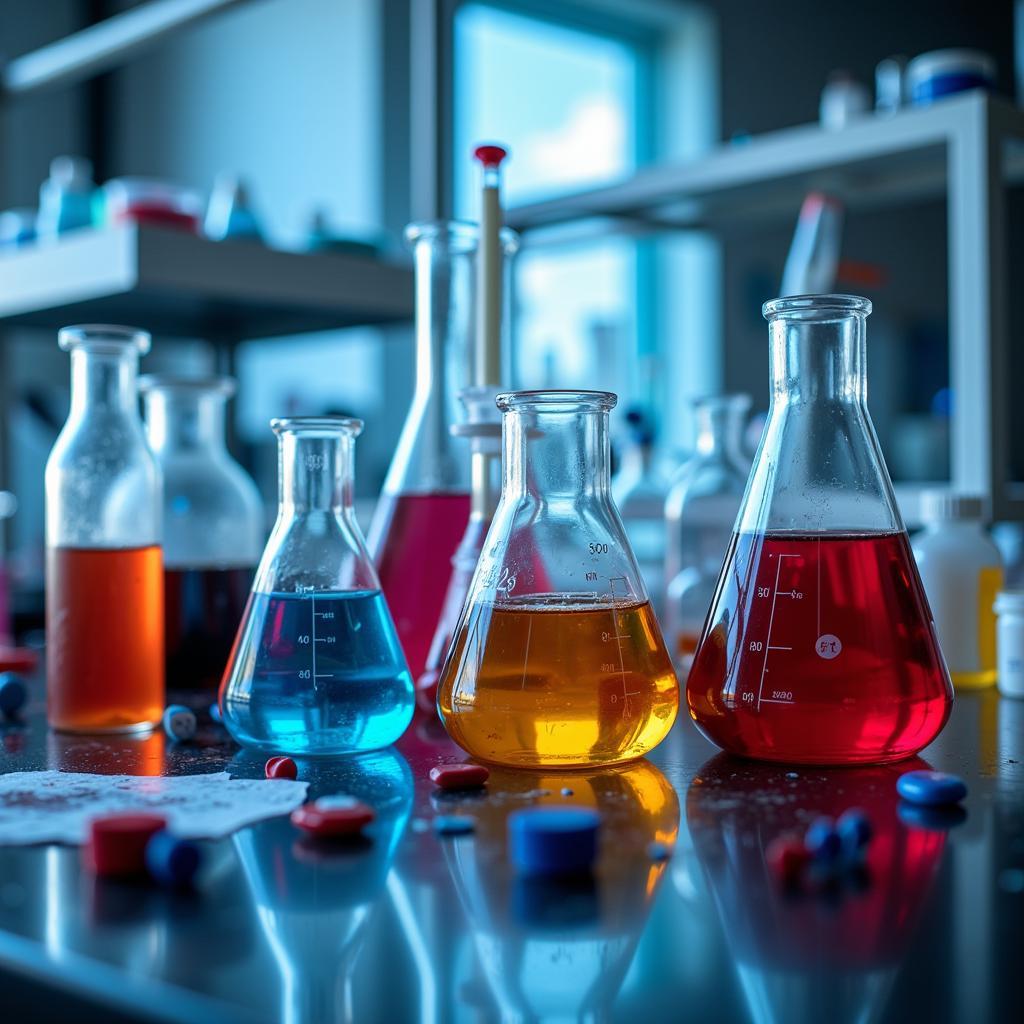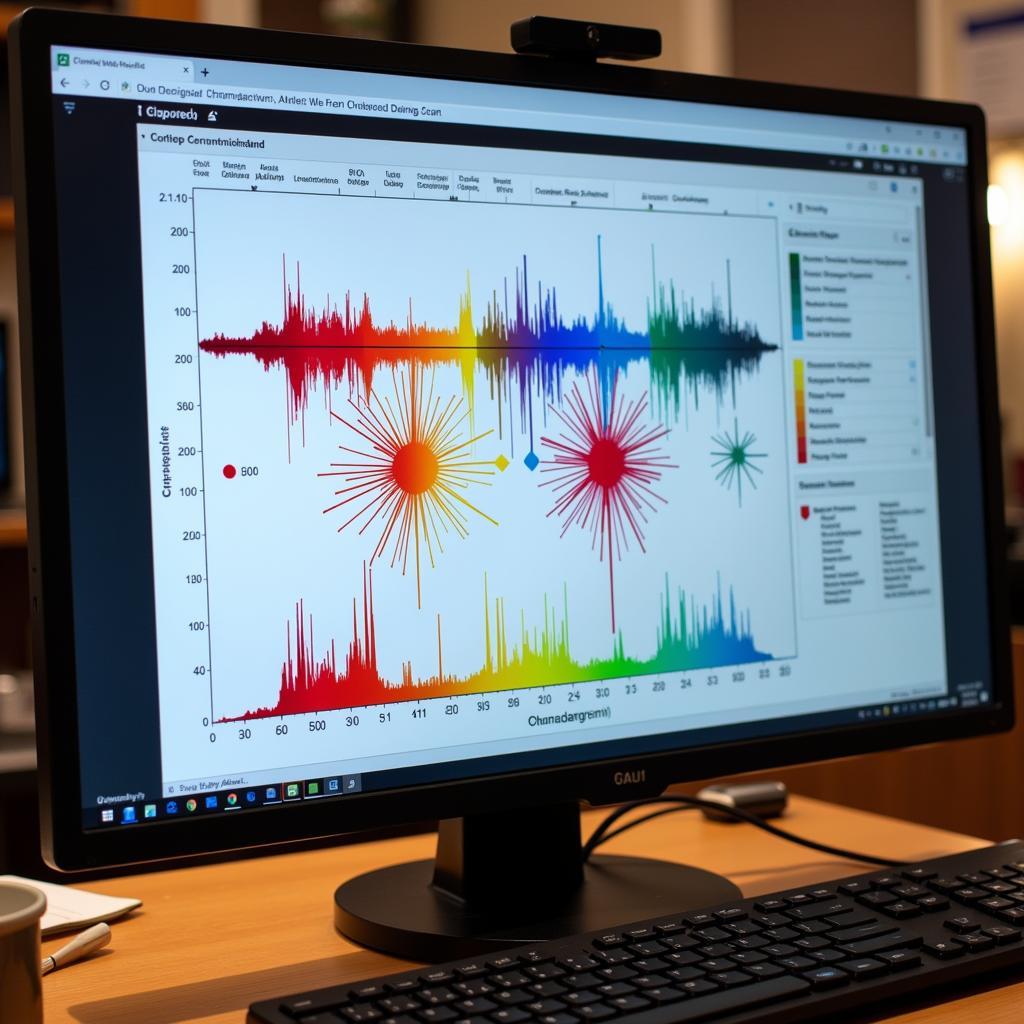The vibrant colors swirling in our favorite drinks are often attributed to food dyes. But have you ever stopped to wonder what exactly these dyes are and how their presence is analyzed in a lab setting? Let’s take a closer look at the fascinating world of food dye analysis in beverages.
Unmasking the Hues: What are Food Dyes?
Food dyes, simply put, are substances added to food and beverages to enhance their color. They come in two primary categories: natural and artificial. Natural food dyes, as the name suggests, are derived from natural sources like fruits, vegetables, and insects. Think of the deep red hue extracted from beets or the vibrant yellow from turmeric. On the other hand, artificial food dyes are synthesized in laboratories and often boast bolder, longer-lasting colors.
The Why Behind the Color: Reasons for Using Food Dyes
While aesthetics play a significant role, the use of food dyes extends beyond just making things look appealing. They can:
- Mask natural color variations: Natural ingredients can vary in color from batch to batch. Food dyes help maintain a consistent product appearance.
- Compensate for color loss: Processing and storage can lead to color degradation. Dyes help restore or enhance the desired color.
- Make food more appealing: Let’s face it, vibrant colors can make food more appetizing, especially for children.
Inside the Lab: Analyzing Food Dyes in Beverages
Analyzing food dyes in beverages is a meticulous process, often involving sophisticated laboratory techniques. Here’s a glimpse into the common methods employed:
1. Spectroscopy: This technique utilizes the interaction of light with matter to identify and quantify the dyes present.
- UV-Vis Spectroscopy: Measures the absorption and transmission of ultraviolet and visible light by the dye molecules, creating a unique spectral fingerprint.
- Fluorescence Spectroscopy: Certain dyes emit light upon excitation with a specific wavelength, and this emitted light is analyzed to determine the dye’s presence and concentration.
2. Chromatography: This technique separates the components of a mixture based on their differential affinities for two phases: a stationary phase and a mobile phase.
- High-Performance Liquid Chromatography (HPLC): Widely used for food dye analysis, HPLC separates dyes within a liquid sample based on their interactions with a packed column (stationary phase).
- Thin-Layer Chromatography (TLC): A simpler and quicker method than HPLC, TLC involves separating dyes on a thin layer of adsorbent material.
 Laboratory equipment used for food dye analysis
Laboratory equipment used for food dye analysis
Safety First: Regulations and Concerns Surrounding Food Dyes
The safety of food dyes, particularly artificial ones, has been a subject of debate. Regulatory bodies like the FDA in the United States and the EFSA in Europe have established acceptable daily intakes (ADIs) for various dyes. These guidelines are based on extensive research and aim to ensure consumer safety.
Common Concerns:
- Allergic reactions: Some individuals may be allergic to certain food dyes, experiencing symptoms like hives, itching, or swelling.
- Behavioral effects in children: While research is ongoing, some studies suggest a possible link between artificial food dyes and hyperactivity in some children.
- Potential health risks: Concerns have been raised about the long-term health effects of some artificial food dyes, but more research is needed to establish conclusive evidence.
Making Informed Choices: What Consumers Should Know
While the debate surrounding food dyes continues, it’s empowering for consumers to be aware and make informed choices. Here are some tips:
- Read labels carefully: Pay attention to the ingredient list and look for specific dyes you might be concerned about.
- Choose naturally colored products: Opt for foods and beverages that derive their color from natural sources whenever possible.
- Moderate consumption: As with many things, moderation is key. Enjoy your favorite colorful treats but maintain a balanced diet overall.
 Chromatographic analysis results of food dyes in a lab setting
Chromatographic analysis results of food dyes in a lab setting
Beyond the Analysis: The Future of Food Dyes
The field of food dye analysis continues to evolve with advancements in technology, leading to more sensitive and accurate detection methods. As research progresses, we can expect a greater understanding of the long-term impacts of food dyes and potentially the development of even safer alternatives.
Conclusion
The analysis of food dyes in beverages is a complex yet crucial process, ensuring the safety and quality of the products we consume. By understanding the methods involved and staying informed about the ongoing debate surrounding food dyes, consumers can make conscious choices that align with their health and dietary preferences.
FAQs about Food Dye Analysis
1. What are the most common food dyes used in beverages?
Some of the most prevalent food dyes include Allura Red AC, Tartrazine, Sunset Yellow FCF, and Brilliant Blue FCF.
2. Can food dyes be detected in trace amounts?
Yes, advanced analytical techniques like HPLC and mass spectrometry can detect food dyes even at extremely low concentrations.
3. Are natural food dyes always a safer option?
While generally considered safer, some natural dyes may also cause allergic reactions in susceptible individuals.
4. Do all beverages contain food dyes?
No, many beverages, especially those marketed as natural or organic, may not contain added food dyes.
5. Where can I find more information about the safety of specific food dyes?
Reputable sources like the FDA website and scientific journals provide comprehensive information on food dye safety and regulations.
Need help with food dye analysis or have more questions?
Contact us! Our team at Mina Cones Food is here to assist you. Reach us at:
Phone Number: 02437655121
Email: [email protected]
Address: 3PGH+8R9, ĐT70A, thôn Trung, Bắc Từ Liêm, Hà Nội, Việt Nam
We offer 24/7 customer support and are committed to providing you with the information you need.
Explore more insightful articles on our website about:
- Food safety and regulations
- Natural vs. artificial food coloring
- The impact of food additives on health
We are passionate about food and dedicated to keeping you informed!